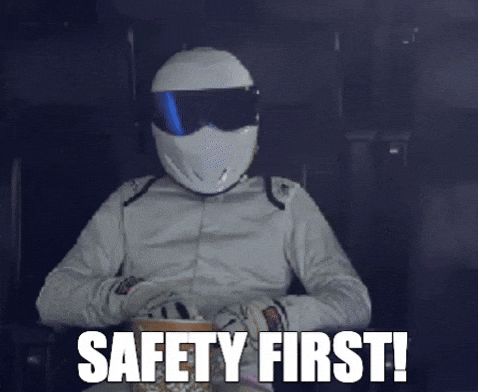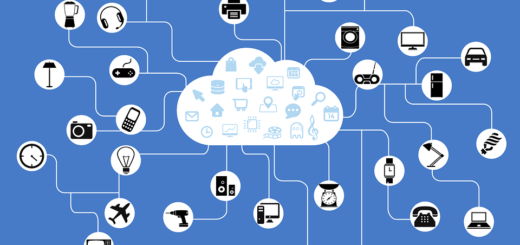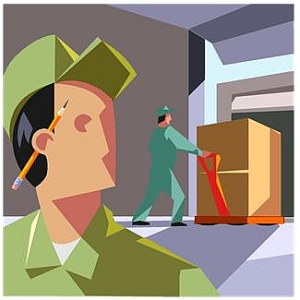Lone Worker Safety: Common Risks & Proven Solutions for Today’s Employers

The risks lone workers face are many and varied, but some risks are common to all work carried out without a teammate in tow.
For example, regardless of the type of work involved, lone work is often isolating, which can impact the worker’s mental health and well-being.
At the same time, lone work is, as the name suggests, performed at a distance from colleagues, often in remote and inhospitable environments.
This means the risks involved with a job can be elevated simply because of the nature of the work and the geography of where the work is carried out.
While managing the risks lone workers face might seem a formidable task, by following a few simple steps, it’s possible to mitigate most of them.
Let’s find out how. It will be helpful for employers and safety managers responsible for the well-being of their lone workers and contractors.
Identifying Risks
The first step a company should take when it comes to managing lone worker risk is to perform a thorough risk assessment.
This is not just a common-sense move, it’s also the law.
The Management of Health and Safety at Work Regulations 1999 stipulate that a company should, at the very minimum:
- Identify all hazards found on the work sites and locations where lone work might be carried out.
- Develop a risk metric that allows the company to decide how likely it is that someone could be harmed or injured on different parts of the work site and doing different jobs.
- Develop strategies and protocols that allow it to eliminate hazards, or, where this is not possible, mitigate and control the risk involved.
A good risk assessment should employ a consultative approach. Moreover, it should actively seek the input of employees and any health and safety representatives who work at the company so that it can get a better handle on the types of risks and hazards workers routinely face.
After all, those who work in the field are more likely to understand the nature of the risks they face and how best to manage and mitigate them.
It’s also a legal requirement for companies with five or more employees to record the significant findings of the risk assessment and make them public.
Common Risks
The UK’s Health and Safety Executive (HSE) suggests there are four main types of risk any company with lone workers should look out for.
They are:
- Violence in the workplace.
- Mental health and stress-related illness.
- Medical suitability for a role or task that involves lone work.
- The geography and topography of a workplace – rural and isolated regions present particular risks for lone workers.
Proven Solutions
In the good old days, whistles and two-way radios or walkie-talkies were the best we could do when it came to safety equipment for workers.
Today, things are a little different.
Companies are spoilt for choice when it comes to lone worker safety devices.
A company such as ANT Telecom offers almost a dozen lone-worker devices, from two-way radios and lone-worker handsets to dedicated apps that run on compatible smart devices and wearable tech that can be attached to belt loops or carried in a pocket.
A modern lone-worker device will come with a range of safety features, including panic buttons, check-in timers, true man-down detection, and GPS localisation of the worker.

In the case of construction project management, for example, an inspector may be assigned to conduct site audits in remote areas or at non-standard working hours when fewer people are around. Consequently, the risk of physical hazards, such as falling debris or malfunctioning of the equipment, becomes magnified as the inspector’s exposure to isolated environments and potential aggression or accidents(native element) increases.
Emergency Response & Incident Management
Even with state-of-the-art technology and thorough risk assessments in place, the possibility of an emergency cannot be fully eradicated. It is essential to have a clear emergency response plan that includes:
- A step-by-step guide outlining whom to contact and the sequence of actions in case of an incident.
- Regular emergency drills ensure lone workers and management know how to react quickly and effectively.
- Post-incident debriefings, where the response is reviewed and protocols adjusted if needed. These debrief sessions are also vital for ensuring ongoing support for workers affected by any incident.
These measures reassure the lone worker and management that, should an incident occur, no one is left without guidance.
Training and Ongoing Support
Enhancing safety isn’t just about deploying the latest technology—it’s also about ensuring that workers know how to use it and understand the best practices for their own protection.
Companies should:
- Develop comprehensive training programs that include using safety devices, maintaining situational awareness, and applying emergency protocols.
- Offer regular refresher courses or scenario-based training sessions that allow lone workers to practice responses to various emergency scenarios.
- Provide ongoing mental health support with scheduled check-ins or access to counseling services. This support is significant given the isolation often experienced in lone work.
A commitment to training and mental well-being ensures that employees are equipped with proper equipment and are informed and resilient in their roles.
Conclusion
Lone work can be a risky business, but it needn’t be unduly dangerous. While lone worker risk might never be entirely eliminated, it’s possible to manage and mitigate most risks by using relevant technology, adopting appropriate safety protocols, integrating an effective emergency response plan, and providing ongoing training and mental health support.
Companies that embrace these emerging strategies and adhere to local and international legal requirements can create an environment where lone workers are monitored effectively and feel supported and prepared to handle unexpected challenges. With these steps, the risks associated with lone working can be significantly reduced, ensuring that workers receive the protection and support they deserve.














